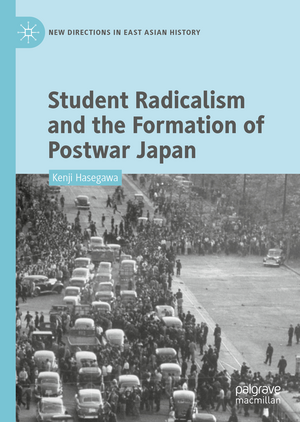Student Radicalism and the Formation of Postwar Japan: New Directions in East Asian History
Autor Kenji Hasegawaen Limba Engleză Hardback – 27 sep 2018
| Toate formatele și edițiile | Preț | Express |
|---|---|---|
| Paperback (1) | 324.95 lei 38-44 zile | |
| Springer Nature Singapore – 16 dec 2018 | 324.95 lei 38-44 zile | |
| Hardback (1) | 499.43 lei 43-57 zile | |
| Springer Nature Singapore – 27 sep 2018 | 499.43 lei 43-57 zile |
Preț: 499.43 lei
Preț vechi: 587.57 lei
-15% Nou
Puncte Express: 749
Preț estimativ în valută:
95.60€ • 103.87$ • 80.35£
95.60€ • 103.87$ • 80.35£
Carte tipărită la comandă
Livrare economică 21 aprilie-05 mai
Preluare comenzi: 021 569.72.76
Specificații
ISBN-13: 9789811317767
ISBN-10: 9811317763
Pagini: 218
Ilustrații: VII, 218 p.
Dimensiuni: 148 x 210 x 20 mm
Greutate: 0.42 kg
Ediția:1st ed. 2019
Editura: Springer Nature Singapore
Colecția Palgrave Macmillan
Seria New Directions in East Asian History
Locul publicării:Singapore, Singapore
ISBN-10: 9811317763
Pagini: 218
Ilustrații: VII, 218 p.
Dimensiuni: 148 x 210 x 20 mm
Greutate: 0.42 kg
Ediția:1st ed. 2019
Editura: Springer Nature Singapore
Colecția Palgrave Macmillan
Seria New Directions in East Asian History
Locul publicării:Singapore, Singapore
Cuprins
1. Introduction.- 2. From Shinjinkai to Zengakuren: Petit Bourgeois Students and the Postwar Revolution, 1945–1950.- 3. ‘Impressionable Students and Excitable Koreans’: Internal Factors in the JCP’s Anti-American Radicalization, 1945–1952.- 4. Guerilla Warfare in Postwar Japan: The Ogōchi sanson kōsakutai, 1950–1952.- 5. Waging ‘Peace’ in Post-Occupation Japan: The Uchinada Base Protests of 1953.- 6. Postwar Departures and Reversions in Mid-1950s Japan: Chongryon, Okinawa, and ‘Bloody Sunagawa’.
Notă biografică
Kenji Hasegawa is an Associate Professor at Yokohama National University, Japan. He received his undergraduate degree from Keio University and doctoral degree in history from Stanford University. His research interest lies in modern history and prior publications include Rediscovering America: Japanese Perspectives on the American Century, co-edited with Peter Duus in 2011.
Textul de pe ultima copertă
This book offers a timely and multifaceted reanalysis of student radicalism in postwar Japan. It considers how students actively engaged the early postwar debates over subjectivity, and how the emergence of a new generation of students in the mid-1950s influenced the nation’s embrace of the idea that ‘the postwar’ had ended. Attentive to the shifting spatial and temporal boundaries of ‘postwar Japan,’ it elucidates previously neglected histories of student and zainichi Korean activism and their interactions with the Japanese Communist Party. This book is a key read for scholars in the field of Japanese history, social movements and postcolonial studies, as well as the history of student radicalism.
Caracteristici
Fills a temporal gap in various narratives of radical resistance in the postwar period Highlights an international context by writing the Korean War into the history of postwar Japan Features new materials like the memoirs of Korean-Japanese student activists










